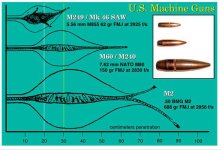Teufel its the hidden beauty of this forum that people actualy get lost in detail like the eloquent gentleman above.
Gee, I thought the thread title was called Anti Tank Rifle vs Infantry.. and look, the section is called General Discussion. To my knowledge we were still discussing "Anti Tank Rifle vs Infantry."
Nice sniping, though.
Upvote
0



